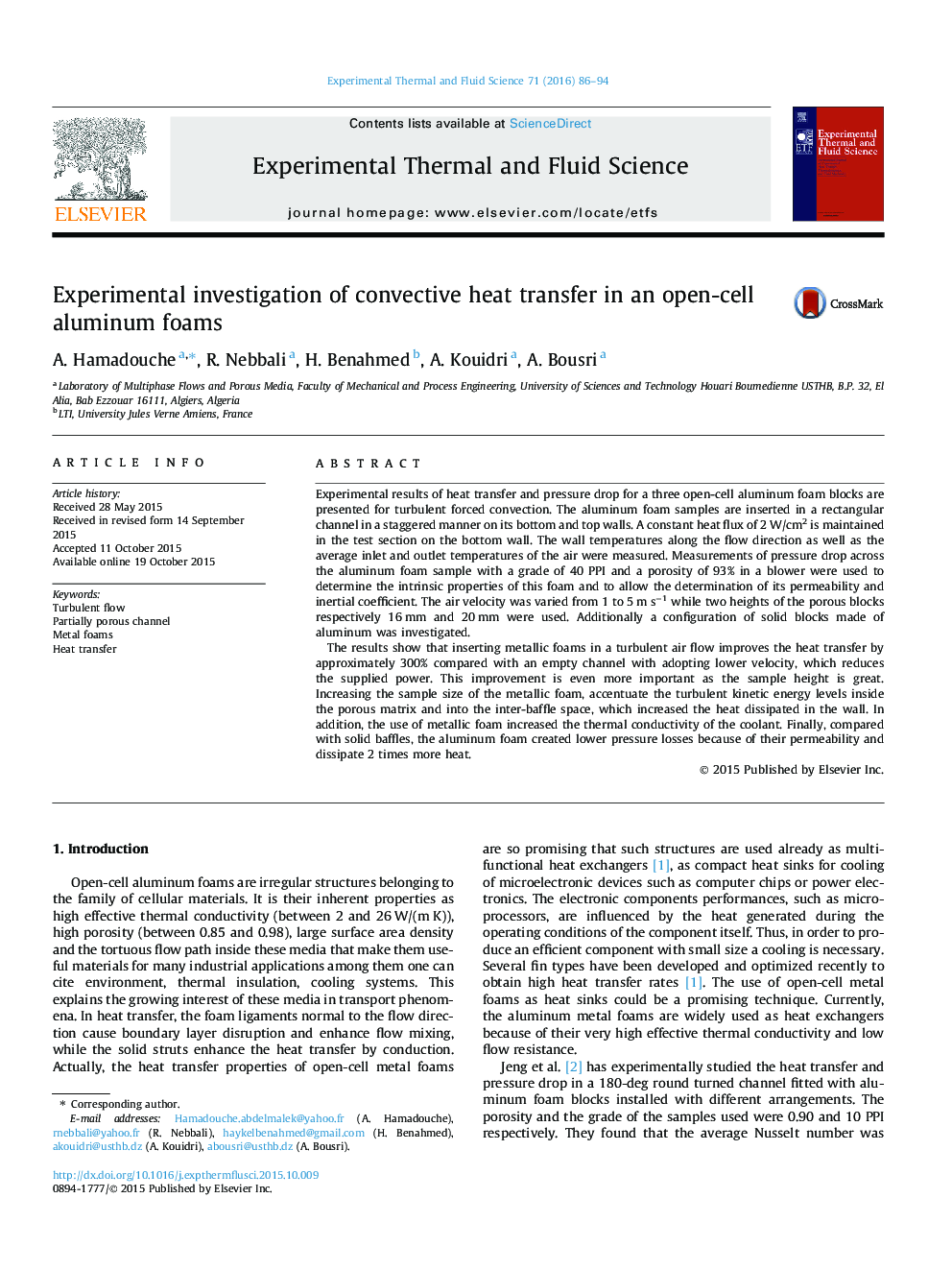| کد مقاله | کد نشریه | سال انتشار | مقاله انگلیسی | نسخه تمام متن |
|---|---|---|---|---|
| 651118 | 1457405 | 2016 | 9 صفحه PDF | دانلود رایگان |
• Experimental investigation has been conducted to study the heat transfer and pressure drop through a aluminim foams.
• The effect of the samples height and velocity on the pressure drop and heat transfer was analyzed.
• Pressure drop and heat transfer for three configurations in turbulent regime are presented.
• Results could be used as a benchmark for numerical modeling.
Experimental results of heat transfer and pressure drop for a three open-cell aluminum foam blocks are presented for turbulent forced convection. The aluminum foam samples are inserted in a rectangular channel in a staggered manner on its bottom and top walls. A constant heat flux of 2 W/cm2 is maintained in the test section on the bottom wall. The wall temperatures along the flow direction as well as the average inlet and outlet temperatures of the air were measured. Measurements of pressure drop across the aluminum foam sample with a grade of 40 PPI and a porosity of 93% in a blower were used to determine the intrinsic properties of this foam and to allow the determination of its permeability and inertial coefficient. The air velocity was varied from 1 to 5 m s−1 while two heights of the porous blocks respectively 16 mm and 20 mm were used. Additionally a configuration of solid blocks made of aluminum was investigated.The results show that inserting metallic foams in a turbulent air flow improves the heat transfer by approximately 300% compared with an empty channel with adopting lower velocity, which reduces the supplied power. This improvement is even more important as the sample height is great. Increasing the sample size of the metallic foam, accentuate the turbulent kinetic energy levels inside the porous matrix and into the inter-baffle space, which increased the heat dissipated in the wall. In addition, the use of metallic foam increased the thermal conductivity of the coolant. Finally, compared with solid baffles, the aluminum foam created lower pressure losses because of their permeability and dissipate 2 times more heat.
Journal: Experimental Thermal and Fluid Science - Volume 71, February 2016, Pages 86–94
